An ode to Britain's wildflowers, from the London bloom which grew in the craters of the Blitz, to the weather-predicting scarlet pimpernel
Decorating the land with their brilliant and varied hues, our native flora which operate as clocks, calendars and Nature’s medicine cabinet are blooming brilliant, says John Lewis-Stempel.

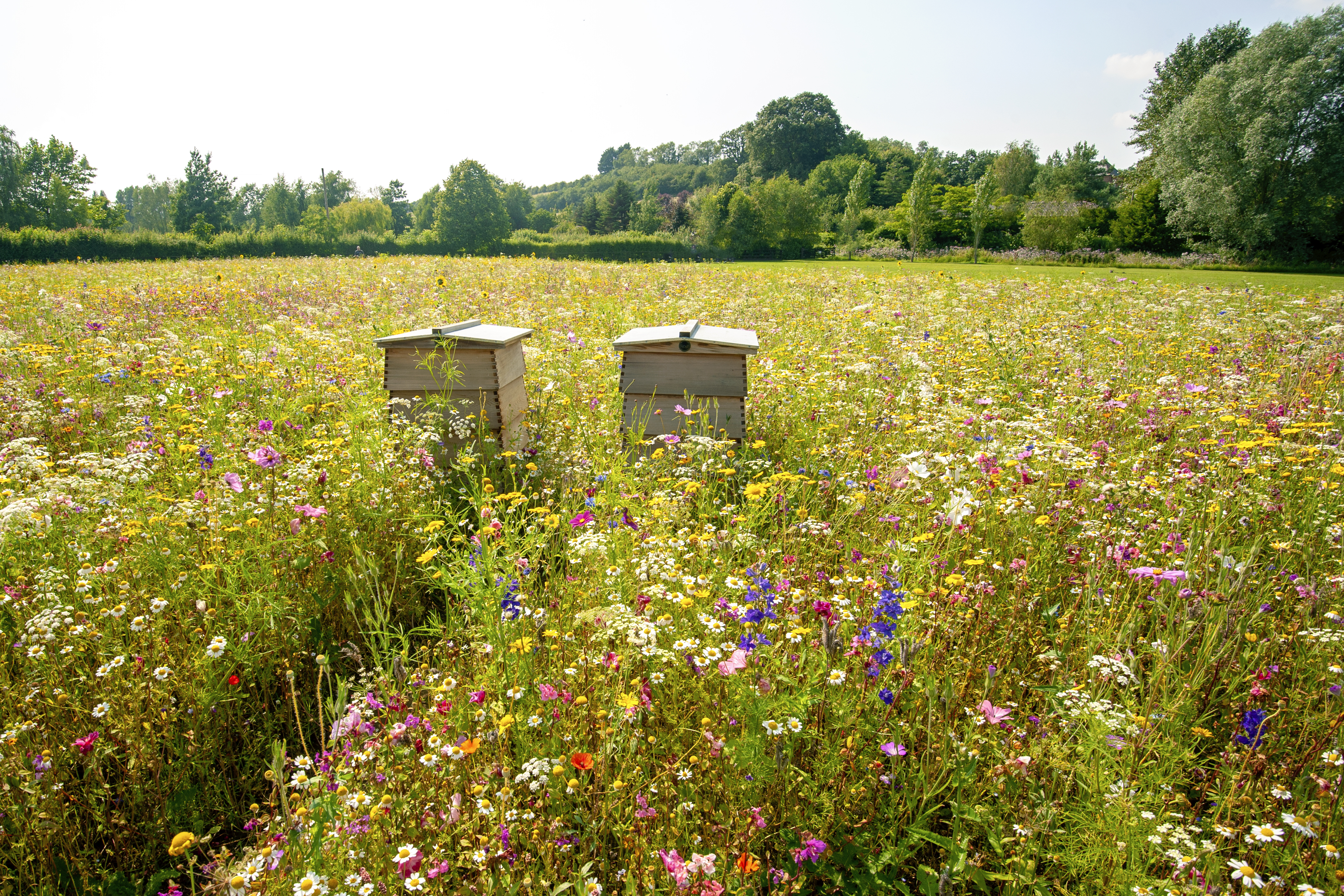
From the archaic hills of Ceredigion to Buckinghamshire’s beech woods, from the dizzy cliff ledges of Co Antrim to the hedged meadows of Devon, wildflowers beautify Britain. Our native flora conquereth, whatever the terrain; on the sea-sprayed shingle of Pembrokeshire the pink and pretty thrift finds an unlikely home, as starry saxifrage, a sweet-stall confection of a plant, finds purchase on the acid rock of Scottish mountains. Of course, not all wildflowers are lovely, prospective ingredients for a bouquet. Even its mother must struggle to love the carnivorous flytrap that is sun dew. Then again, being interesting is a type of sublimity. You would need a head of stone if your heart were not uplifted by our wildflowers, all 1,600 of them.
The nation’s wildflowers have more than aesthetic value and do more than colourise the scene top to bottom (although that itself would be sufficient). They are our natural calendar, beginning in late winter when, in the evening wood, a single emergent anemone, as white and fragile as moonlight, catches the wind, catches the eye. Under the brick wall of the suburban Surrey greenhouse, snowdrops glisten pearly, and, from a Gloucestershire copse, a lateral flash of gold as one drives past; the wild daffodils are ‘out’.
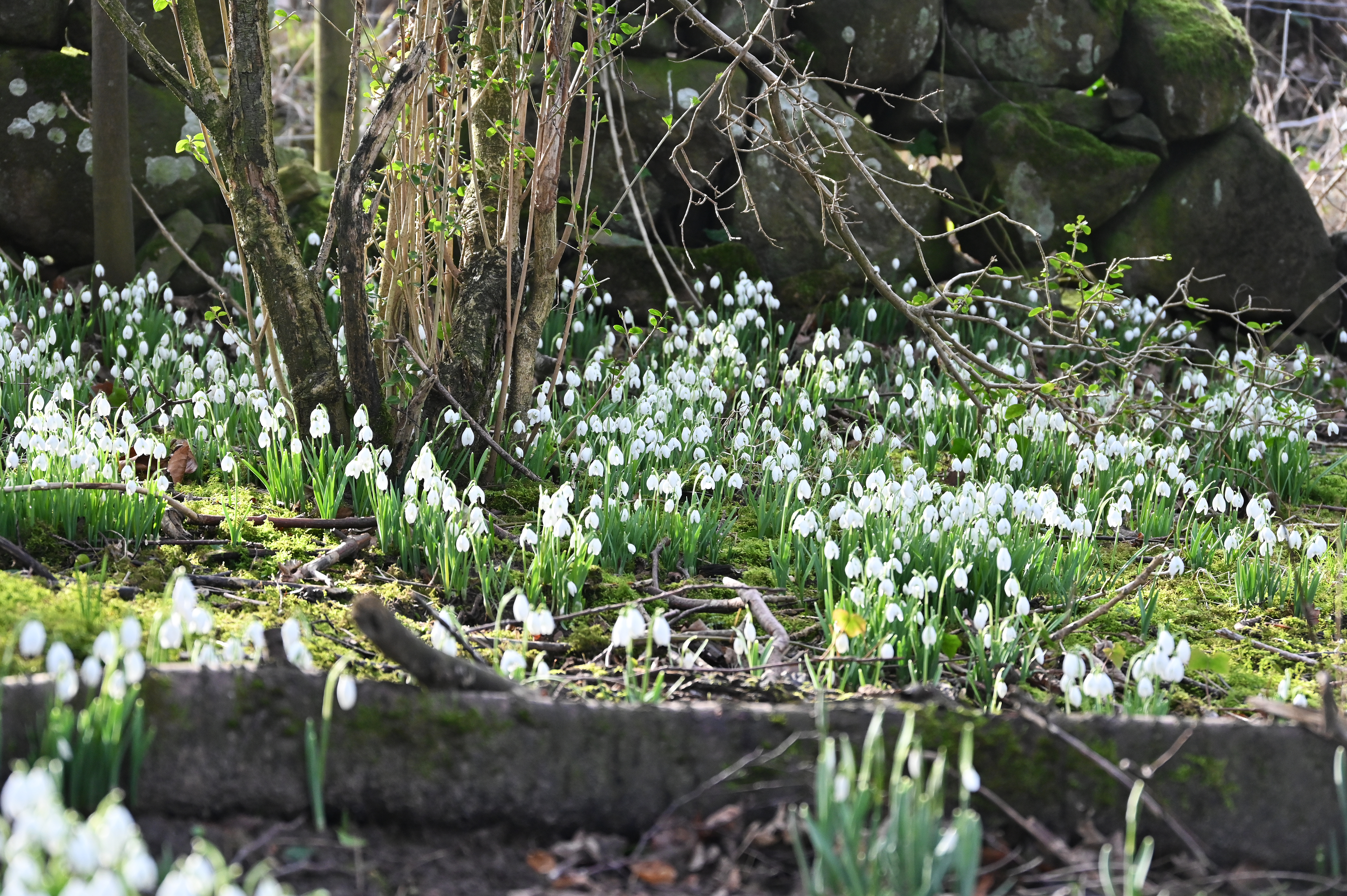
A carpet of snowdrops is a typical signifier than spring is near.
As surely as the coming of cuckoos and swallows, wildflowers announce spring, the heating of the earth in which they first grow. They proceed to signal all the seasons; this July month of summer is perfumed by sweet honeysuckle in the rambling hedge and sees the laundry-billowing of cow parsley on the lane, before autumn is marked by the blooming of Michaelmas daisy. Deep winter, of course, is defined by its very flowerlessness.
From the homely ubiquitous buttercup to the exotic, purple pyramidal orchid of the Isle of Wight, wildflowers are Nature’s clock, as well as the calendar. You can set your watch by the opening and closing of the native flora. The red poppy distinctive of East Anglia unfurls its silken petals at 5am, the evening primrose of the southern counties unfolds its head at 9pm. If you wished to forecast the weather, you could do worse than consult the scarlet pimpernel, which closes up when rain is due. In days gone by this small scrabbling flower was considered an indispensable detector of deluge, or as John Clare versed it:
And scarlet-starry points of flowers
Pimpernel, dreading nights and showers
Oft calld ‘the shepherds weather glass’
Exquisite houses, the beauty of Nature, and how to get the most from your life, straight to your inbox.
That sleep till suns have dyd the grass.
You can seek and find scarlet pimpernel here, there, everywhere. It’s a flower of arable farmland. ‘Weed’ some might call it, persisting gloriously against the chemical ravages of industrialised agriculture.
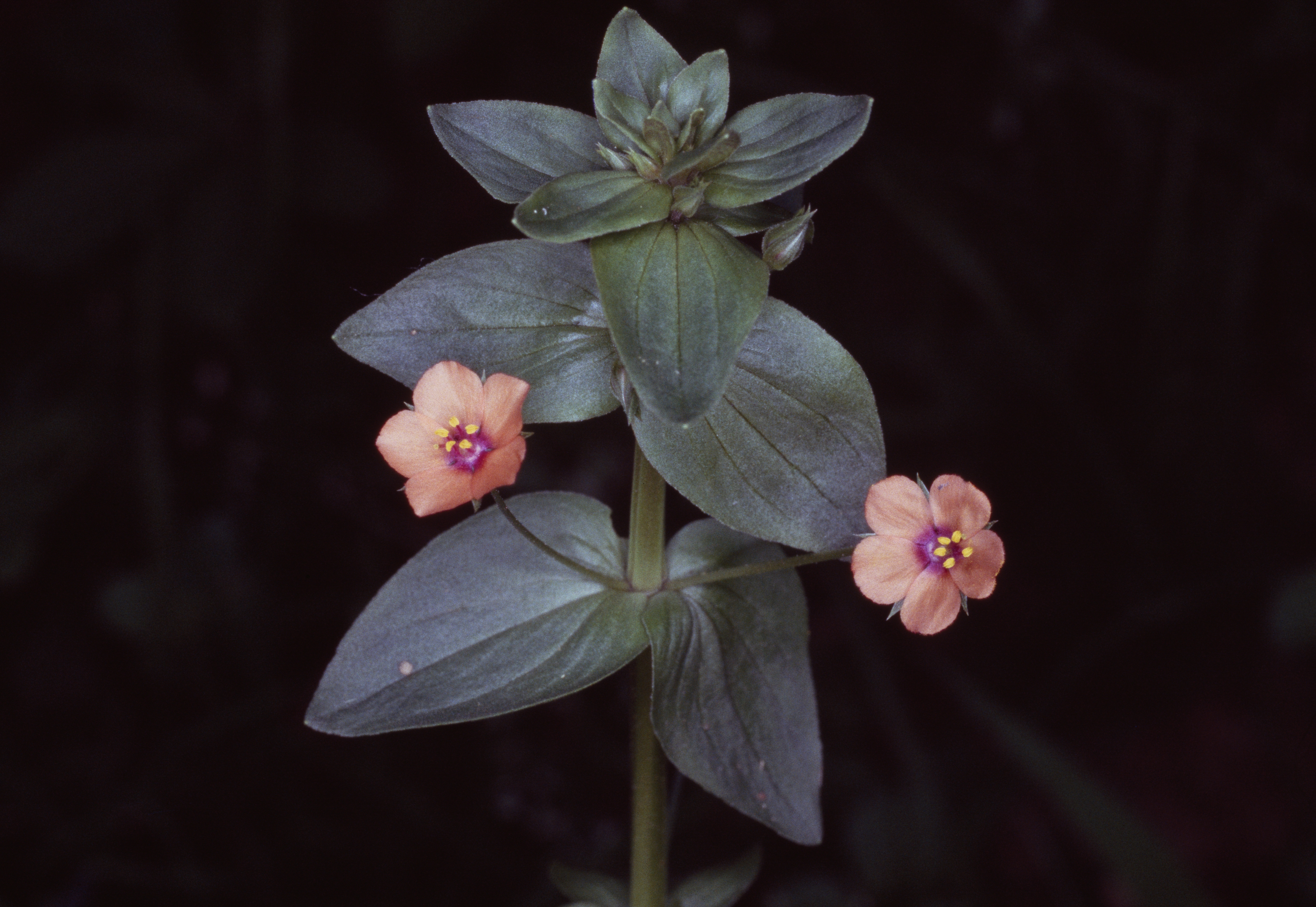
The scarlet pimpernel gets a bad reputation as a weed, but it's not entirely fair.
Floral devices, such as Anagallis arvensis for weather-forecasting, were formerly necessary, not quaint. Life, even survival, not so long ago depended on finding the window in the weather to plant the wheat, shear the sheep and make hay. Folk meteorology was grounded in the observation of floral phenomena — the original citizen science — and turned into propositions and proverbs. The gift of rain prediction is shared by other flora, among them hedge bindweed, dandelion, daisy. All are marvellous at meteorology.
The people of the past lived by wildflowers. Quite literally. The earliest known British dish, positively Neolithic, is nettle pudding. Flora Britannica was once the nation’s medicine chest as well as larder; to this day, the curative capacities of native flowers are memorialised in their common appellations. Field scabious, an elegant lilac flower nodding on a thin long stalk, takes its joyless name from the belief that a decoction of its roots would ameliorate scabs and ringworm. Meanwhile, the wondrously titled squinancywort, a waxy flowered perennial of the Downs, was a treatment for quinsy, a sore throat. A ‘wort’ is a healing herb, hence milkwort being prescribed to nursing mothers. A denizen of the South’s chalkland, the minute milkwort is easily overlooked in the grassy sward — unless it is wearing its radiant blue flower so charmingly described by herbalist John Gerard: ‘The flower grows at the top, of a blew colour, fashioned like a little bird, with wings, tail, and body, only to be discovered by those who do observe the same.’
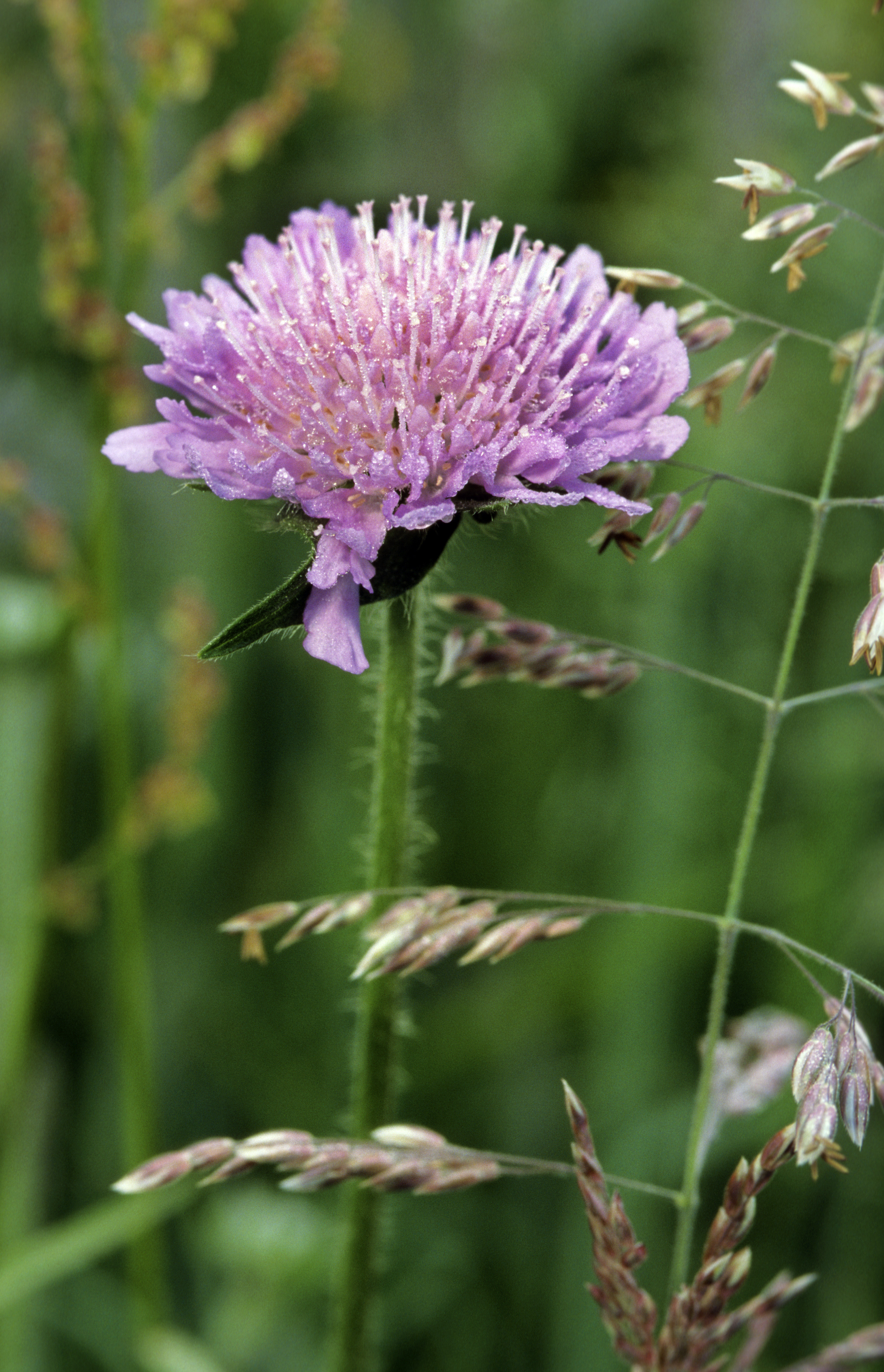
People once believed field scabious cured ringworm.
Medicinal knowledge concerning wildflowers was codified in the great Herballs of the 16th century, those by Gerard, Culpeper and Turner. We dismiss the ancient pharmacopoeia at our cost. There was wisdom in its pages; after all, the foxglove, with its tubular bells beloved by counties from Argyll to Monmouthshire, is a contemporary source of digitalis for heart ailments.
Wildflowers had supernatural, as well as practical application. There’s folklore, too, in flower names. Greater stitchwort, that bridal-white familiar of the spring hedgerow, takes its cognomen from the Anglo-Saxon belief that elves shot invisible arrows into humans — causing a ‘stitch’ in the side — and that, consequently, a concoction of Stellaria holostea was a relief. Red campion brought into the house by hapless children was bad luck, especially for the mater: in the North-West, the flower was known as ‘Mother-dee’, meaning ‘Mother die’. If you wished a safe journey in Olde Britannia, you stuck a small sprig of sky-blue Germander speedwell, easily troved on the wayside, into your coat. Some flowers were clearly under the protection of God and were apotropaic, a means of averting evil. Into the 19th century, St John’s wort was placed above doors and windows to keep away the Devil and all his works. Bluebells, anciently believed to be fairy traps to lure unwary passers-by, were transfigured in the Victorian century to become evidence of Creation. The poet Gerard Manley Hopkins looked into a bluebell and saw nothing less than ‘the beauty of Our Lord’. If so, we are blessed. The bluebell is a very British quiddity. Half the world’s bluebells grow in British woods.
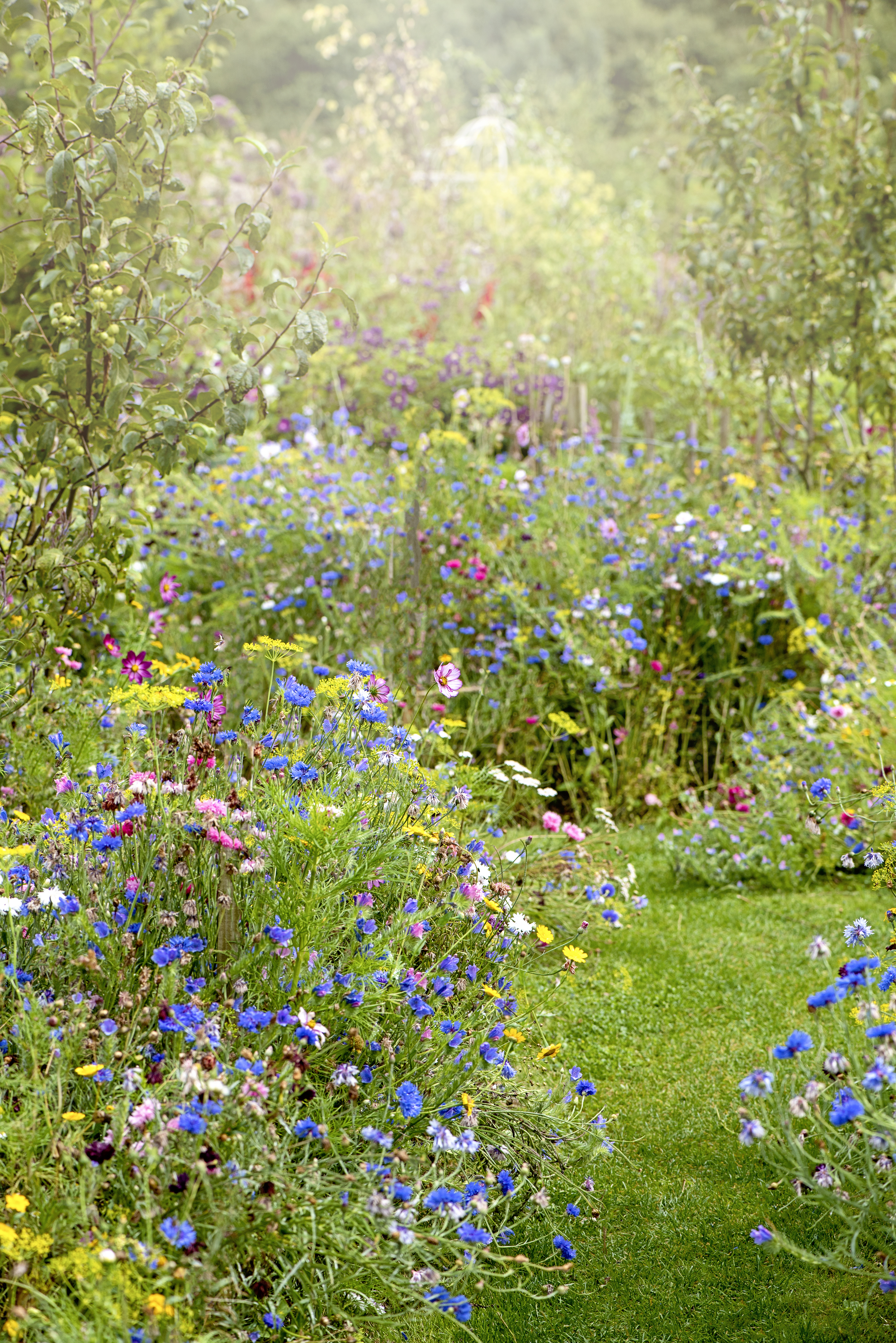
There is a belief that finding pleasure in wildflowers is a privilege of modern people, the Romantics and beyond, whereas the people of yore had a strictly utilitarian attitude. I gainsay this with Gerard’s loving description of milkwort above, and Shakespeare. One quote from the Bard’s Love’s Labour’s Lost will serve:
When daisies pied and violets blue
And lady-smocks all silver-white
And cuckoo-buds of yellow hue
Do paint the meadows with delight.
‘Paint’ was a judicious authorial choice, for wildflowers decorate the land with their brilliant and various hues, rainbow-running from red clover to sweet violet. If they sometimes daub the landscape, as with the hallucinatory bluebell pool in the springtime wood, wildflowers are more often dots and dashes, a perfect floral pointillism of tone and taste. The only proof needed is the verge of the lane in May, with its red clover, white campion, yellow dandelion.
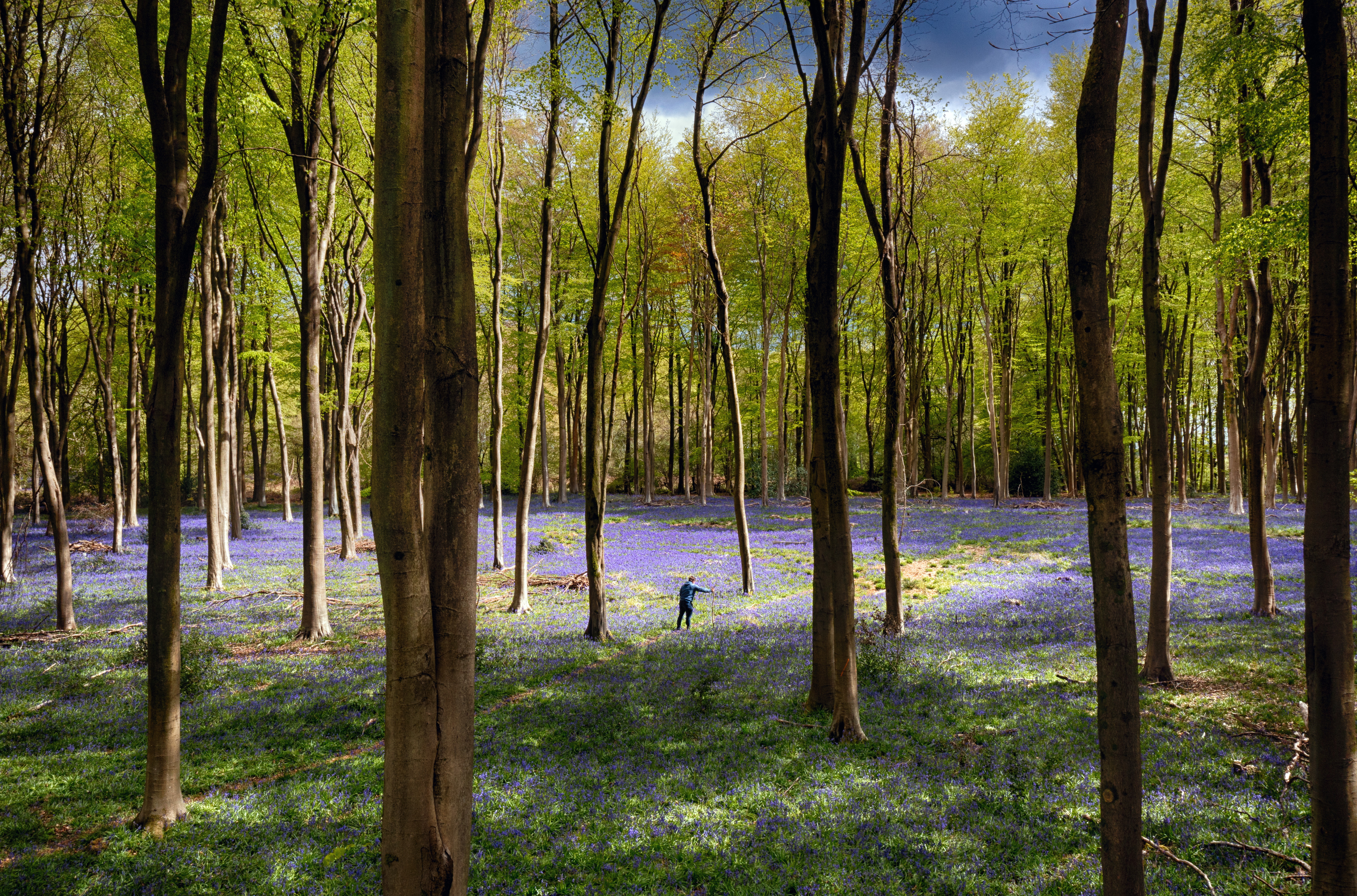
Bluebells blanketing the woodland in Winchester.
The wildflowers of our countryside are a joy — why should we presume that Britons beholding Ceasar’s landing legions enjoyed decorating themselves with dye from woad, Isatis tinctoria, but not placing a posy of wild pansy to cheer up the wattle-and-daub roundhouse? Wildflowers are embroidered in our heritage and history. The startling and flamboyant purple pasqueflower grows, legendarily, where the blood of Roman and Dane was spilled (pasque from paschal, ‘of Easter’, since Pulsatilla vulgaris flowers in its bastions of Cotswolds, Chilterns and Cambridgeshire in April). Roses were the symbols of the warring houses of Lancaster and York over the throne of England. Red for Lancaster, White for York. Curiously, or perhaps thankfully, we remain locally loyal about our wildflowers. In 2002, the conservation charity Plantlife International decided to award a new symbol to each of the UK’s counties, a wildflower chosen by the public of each region. There have been reiterations of their bountiful wildflower map and the passion of floral choice remains undiminished. Wildflowers are rooted — and remain so — in human consciousness. Manchester’s selected wildflower is moorland’s cottongrass, the fluffy white flowers of which are a floral souvenir of the city’s cotton-mill fame, whereas London’s emblematic flower is rosebay willowherb, which grew so bravely in the craters of the Blitz.
We no longer rely on wildflowers as clocks and calendars, no longer need to forage our food from the hedgerow or our medicine from the fields, but we continue our dependence on our native flora. They nectar the bees and insects that are the pollinators for our food crops. The yield of soft fruit can be increased by 54% simply by placing adjacent a wildflower strip to feed the gauzy-winged insecty things. Britain’s wildflowers. Aren’t they blooming brilliant?
This feature originally appeared in the July 30, 2025, issue of Country Life. Click here for more information on how to subscribe
